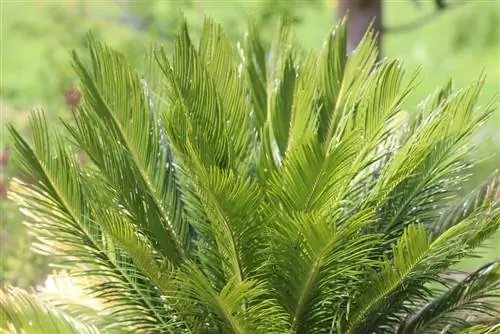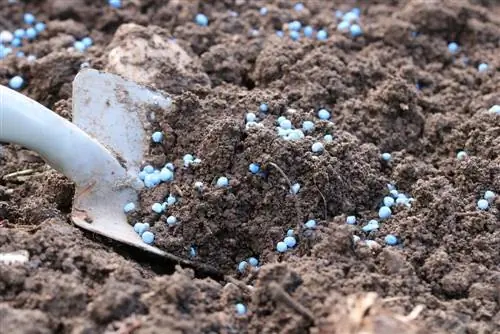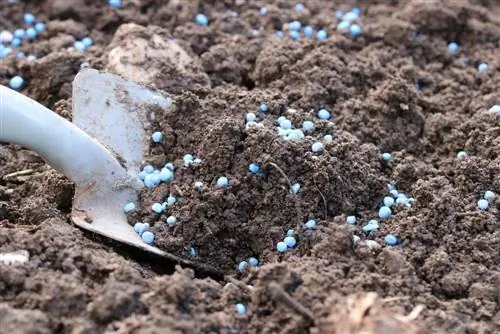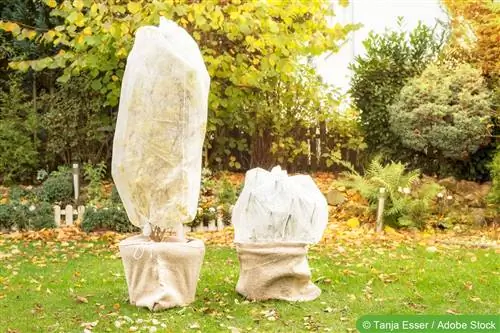- Author admin [email protected].
- Public 2023-12-17 03:39.
- Last modified 2025-01-24 12:45.
The cycad is a further development of ferns, but without having reached the evolutionary stage of palm trees. It's a fossil. The cycad is one of the modern flowering plants. It does not reproduce via spores like ferns. Cycads are usually sold as young plants. Then they are still quite small. Cycas revoluta can live for several hundred years. They grow extremely slowly.
Cycads are best cultivated in pots. In summer they belong outside. Indoors all year round is not so good for the plants to thrive.
Location
The cycad requires a bright, sunny location if possible. If you put the pot back out after the winter rest, you have to slowly get the plant used to the sun again. The fern can get sunburned. The burns remain visible for a long time because of the slow growth. Burns can also occur if there is too much sun outside in the summer, but this is rare and usually happens when the farm is not yet used to the sun.
Note:
It is important for the indoor location that the light does not only come from one direction, otherwise the newly formed fronds will only grow in one direction and not all around.
Planting substrate
The planting substrate should definitely be permeable. For older specimens you can use commercially available potting or cactus soil, but you should make sure that it does not contain peat. Drainage in the plant pot makes sense because the plants do not get waterlogged. Cycas revoluta prefers coarse-grained soil mixed with lava grit, expanded clay or gravel, enriched with a little clay and humus.
Care
The cycad gets by with little water. The plant substrate should not be too moist, but it should never dry out completely. The more you water it in summer, the stronger its growth. Waterlogging is unhe althy. Water enough so that the soil is well moistened right up to the bottom of the pot. The next time you only water when the substrate has dried thoroughly. The palm farm likes it warm, but can also cope with adverse conditions.
It is important that the plant must not be moved while the fronds are forming. You must also avoid turning the pot, otherwise the fronds will grow crooked. Only moving from the room outside is sensible and advisable, provided the temperatures allow it.
Tip:
Cycas revoluta likes its leaves to be wiped with a damp cloth every now and then.
Fertilize
Since the palm farm grows slowly, it hardly needs any fertilizer. During the period when new fronds are forming, you can fertilize once a week with a green plant fertilizer. Otherwise, it is enough to provide nutrients once a month with the same fertilizer.
The nutrient requirements are also very low due to slow growth and low water requirements. It is best to fertilize Cycas revoluta with cow manure, which is dissolved in water. The plant can often tolerate a small dose of this. If you use liquid fertilizer, you should pay attention to a particularly low dosage. If commercial flower fertilizers are used, they should only be administered in a 0.05% solution. Spring, before budding, or summer are suitable for repotting. It is important that the plants are repotted in a plant pot that is not too large. The cycad requires sandy-loamy soil, but standard soil mixed with sand is also suitable.
Cut
When a new wreath of leaves sprouts, the lowest and oldest wreath dies. These leaves are cut off, but only when they are completely dry.
Wintering
The plant is put away as soon as night frosts are announced. Overwintering is best done in a cool room at around 5ºC. It shouldn't be more than 15 ºC, then the plant will start to grow and rot. It is ideal if it is a bright room. If the cycad is overwintered in a normal room, it must be put away early to avoid a rise in temperature when put away and thus a growth impulse.
Propagation
Propagation is possible through ripe seeds, but success cannot be promised. Propagation is extremely difficult for the indoor gardener. However, if you do want to give it a try, you can try to get ripe seeds. The seeds are sown in a warm house, whereby attention must be paid to a soil temperature of 25-30 degrees Celsius. Cycas revoluta is one of the robust plants. Pests can only be expected if the winter is too dry and too warm. This is where mealybugs come into question, which can be recognized by small, cotton ball-like structures on the fronds. These can be easily gotten rid of with a soap and alcohol solution. You should then clean the leaves with clear, low-lime water.
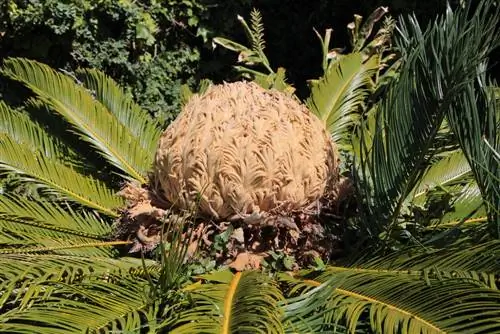
Buy
The smallest cycads are available from around 15 euros. If you have time, you can try growing a seed. You can also get seeds in stores for a price of 1.5 to 5 euros each.
Frequently asked questions
Is cycad poisonous?
The cycad is poisonous to dogs and cats, and probably also to other animals. It can lead to vomiting and diarrhea, including blood, stomach and intestinal problems, cramps and attacks of weakness. The cycad, or sago palm, is a relic from prehistoric times, when dinosaurs still populated the earth. At that time there were numerous species of this plant, but today only Cycas revoluta can be purchased. The cycad, similar in growth to a palm tree, has nothing in common with the palm genus. Its growth is very slow. The plant is quite undemanding in terms of care, which makes cultivation relatively easy for the indoor gardener.
How much sun can the cycad tolerate?
The location should be bright, but direct sunlight should be avoided. In summer, the plant can safely be placed in a bright, airy place on the terrace or on the balcony. Regular watering is necessary, but waterlogging should be avoided. In winter the water requirement decreases; you should just make sure that the root ball does not dry out completely. High humidity is desirable. In summer, the plant should be sprayed from time to time with a hand sprayer - with stale, low-lime water. High humidity is particularly important in spring at the beginning of the growth phase (new growth).

